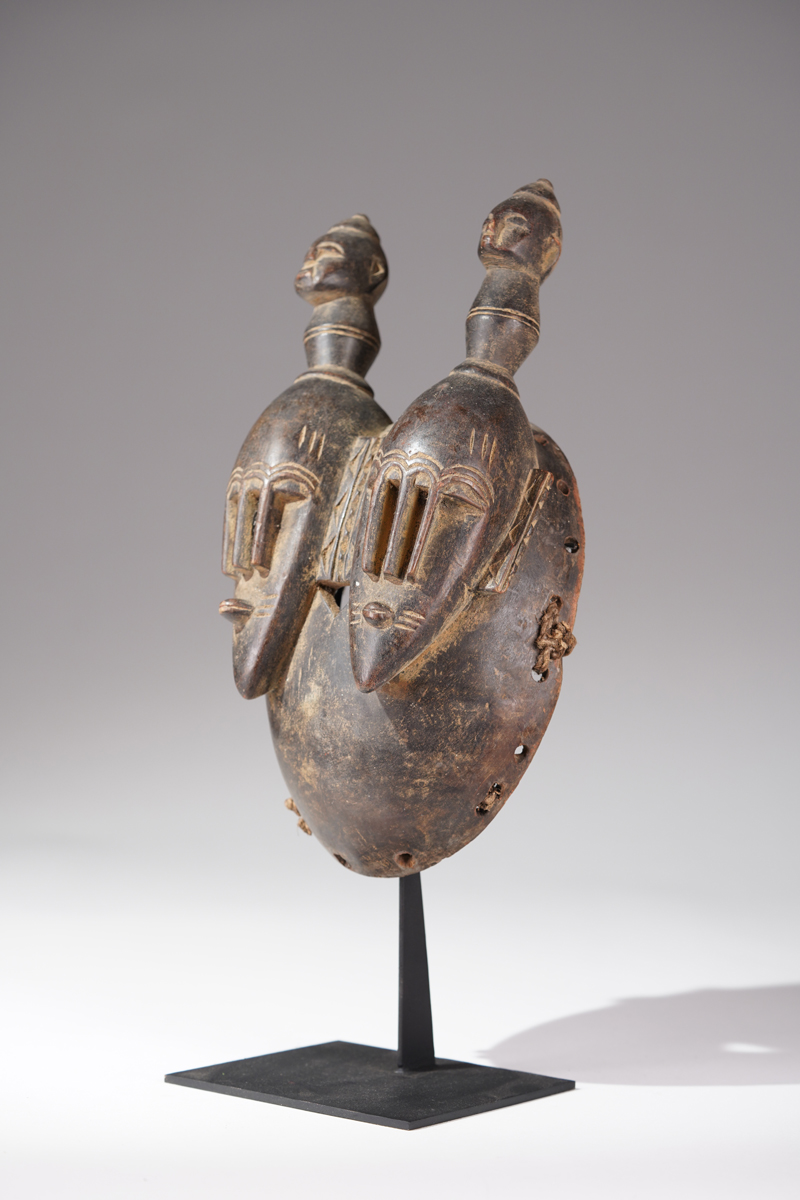|
A Baule double mask / twin mask / Baule Nda, two faces are carved almost like Siamese twins in one block, both faces show the same facial features, the identical scarification marks on forehead and cheeks and the ears with a the zig-zag decoration. Several holes for fastening the mask bands - which are still in situ - to the head of the wearer, a fne dark patina. Certificate of origin and provenance. If this mask is called Nda, it is because its purpose is to celebrate the joy of giving birth to twins, and to celebrate them in order to manifest the immense admiration of those around them. The Nda appears at regular intervals (with five or six other masks) as part of celebration ceremonies open to all, the names of which vary depending on the subgroups: ajusu, ajemble, ngblo or mblo. The Nda even becomes a part of everyday life for the flesh and blood twins that it evokes, symbolizes and values. As such, it falls within the category of portrait masks (the Ndoma) bearing the surnames of people they honor. Indeed, doesn't the word Ndoma itself mean "equivalence", replica" or "a double of the person" ? Essential fact: during a ceremony, the Nda mask is accompanied by the people it represents, who dance with the bearer and who are thus established as the living doubles of the work of art. If unavailable, they appoint "representatives". Upon the death of the twins, these "substitutes" continue this service, but the mask is more often than not no longer part of dances. Lit.: Susan M. Vogel: Baule: African Art Western Eye, 1997; Bernard de Grunne: Über den Baule-Stil und seine Meister. In: Eberhard Fischer/Lorenz Homberger: Afrikanische Meister. Kunst der Elfenbeinküste, Zurüch 2014, p. 81-106; Alain-Michel Boyer: Baule. Visions of Africa, Milan 2008. sold Height: 30 cm |
 photo: wolfgang-jaenicke.com, for more information, please write us an e-mail with the identification number of the photo identification no. XBD139487.jpg |